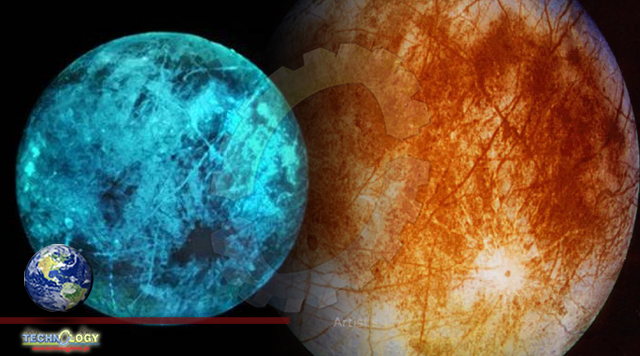Jupiter’s moon Europa glows it can look slightly green, blue or even white. New lab experiments which recreated the environment of Europa shows that the various salty compounds on it react to radiation and emit the shimmer.

By Aswathi Pacha
Glowing Europa
Jupiter’s moon Europa glows — it can look slightly green, blue or even white. New lab experiments which recreated the environment of Europa shows that the various salty compounds on it react to radiation and emit the shimmer.
“If Europa weren’t under this radiation, it would look the way our moon looks to us – dark on the shadowed side,” lead author Murthy Gudipati said in a release. “But because it’s bombarded by the radiation from Jupiter, it glows in the dark.”
Polypill and heart diseases
Heard of polypills? It is a single pill which contains many medications. Now a study on more than 5000 people tested a polypill containing blood pressure and cholesterol medications, along with a daily dose of aspirin.
It found that the polypill plus aspirin was able to reduce cardiovascular diseases (in people at risk for heart disease) by 31%. Study author Salim Yusuf from McMaster University School of Medicine in Toronto notes: “Use of a polypill plus aspirin can avert 3 to 5 million cardiovascular deaths globally.”
Climate change stress
A 2-million-year-old fossil discovered in Johannesburg has shown how climate change played an important role in the evolution of Paranthropus robustus, an extinct cousin of humans. P. robustus had distinct features in its jaws and teeth which helped it survive on “foods that were mechanically difficult to eat as the environment changed to be cooler and drier, leading to changes in local vegetation.”
A dusty tale
About 20,000 years ago, dust which carried iron particles helped fertilise the phytoplankton in the South Pacific ocean. But where did this dust come from? To understand this, researchers collected sediments from the bottom of the South Pacific ocean.
They found that about 80% of the dust came from what is now north-west Argentina. It was transported by the westerly winds and travelled over 20,000 kilometres to nourish the phytoplankton.
The Zoonomia Project
Want to take a detailed look at mammals? Here is the largest genomic dataset, of more than 200 species, representing more than 80% of mammalian families. The authors write that studying the genomes could provide crucial information about their diversity, which populations may be at higher risk for extinction, and can also help prioritise conservation strategies.
Originally published at The Hindu